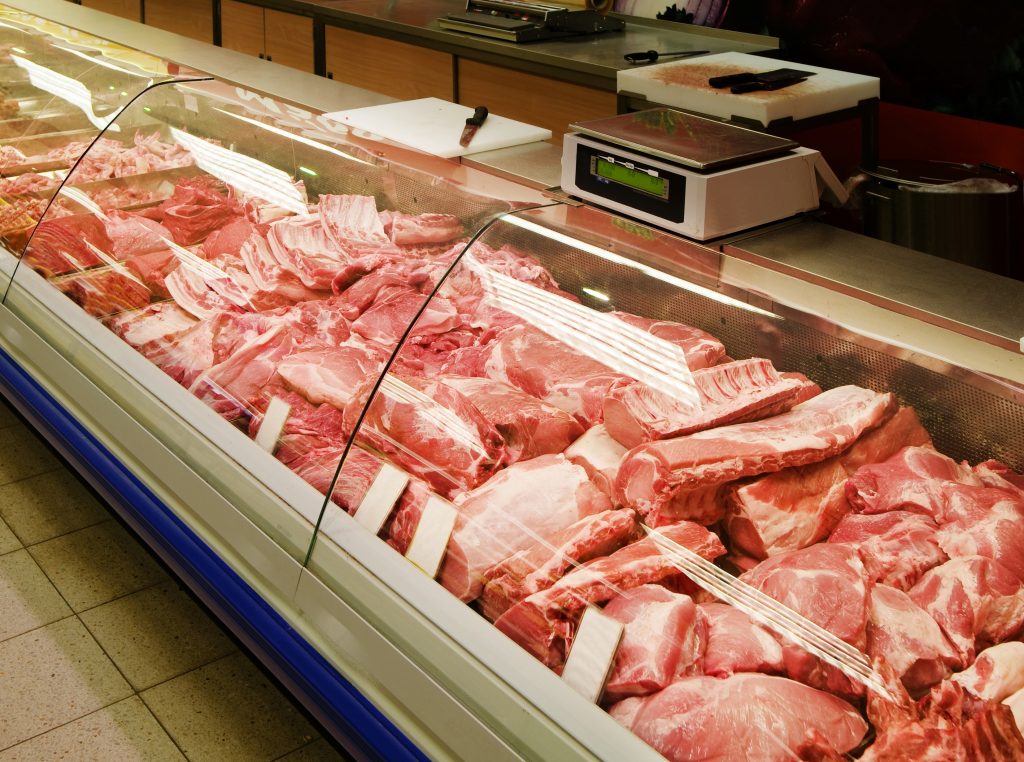
Weekly, Oklahoma State University Extension Beef Cattle Nutrition Specialist Paul Beck offers his expertise on the beef cattle industry. This is a part of the weekly series known as the “Cow-Calf Corner.” Today, he talks about beef enhancing research.
Consumers relate the color of meat to freshness and base their purchasing decisions on color more frequently than any other quality trait. When purchasing beef, studies show that consumers want to see a bright cherry red color, deeming other color deviations as unacceptable off color of beef products is a significant economic cost to the beef production system. A recent published study from Oklahoma State University meat science researchers noted that the US beef industry loses $3.73 billion annually due to beef discoloration. Here are some highlights of efforts by OSU Animal and Food Sciences faculty and students to improve beef value.
Dr. Gretchan Mafi and Laura Yoder studied natural antioxidants and different packaging types on color and freshness of ground beef. Consumers prefer traditional foam trays with PVC plastic overwrap but this may limit shelf life. Alternatives like “Master Packaging” (MP) or “Modified Atmospheric Packaging” (MAP) will extend shelf life of meat products. In a MP, products are first packaged in traditional PVC and placed into a large bag which is flushed with inert gasses, such as carbon monoxide, nitrogen, or carbon dioxide, to create an anaerobic condition. Modified Atmospheric Packaging is where beef is place in rigid trays with air evacuated and then backflushed with gas mixtures. Rosemary, green tea and a combination of rosemary + green tea were added to ground beef and formed into patties. Patties were packaged into PVC, MAP or MP. Panelists strongly detected the green-hay flavor in patties with rosemary and rosemary + green tea antioxidants. However, patties with green tea or regular ground beef patties did not have detectable green-hay flavor. All patties in PVC had greater amounts of lipid oxidation and discoloration than those in MAP. In PVC packaging, green tea or rosemary + green tea reduced lipid oxidation and discoloration compared to control or rosemary patties in PVC. This research shows that packaging and use of antioxidants can reduce beef discoloration and extend storage shelf life. (More details can be at https://iastatedigitalpress.com/mmb/article/id/11697/)
Dark-cutting beef has a higher pH postmortem due to increased stress caused by many factors including transportation, weather and handling. Dark-cutting beef reduces carcass value because of negative consumer perceptions. A project by Dr Ranjith Ramanthan and Morgan Denzer looked at the effects of packaging type and enhancement of dark cutting beef with glucono delta-lactone and rosemary (DCE). Dark cutting steaks with enhancement had an increase in redness in 24 h of dark storage. DCE steaks packaged in a novel nitrite embedded packaging improved surface redness during retail display. However, repackaging DCE steaks in PVC decreased color stability and redness of steaks within 12 h of the display. The enhancement decreased internal redness upon cooking, and panelists did not notice major tenderness differences. This research suggests that adopting appropriate packing and enhancement technology has the potential to increase the value of dark-cutting beef. (To read the full article https://www.sciencedirect.com/science/article/pii/S2772502222001494.)
The meats group at OSU is very active in conducting research that will improve the economics of our industry by decreasing waste and increasing consumer acceptability of our beef products.














